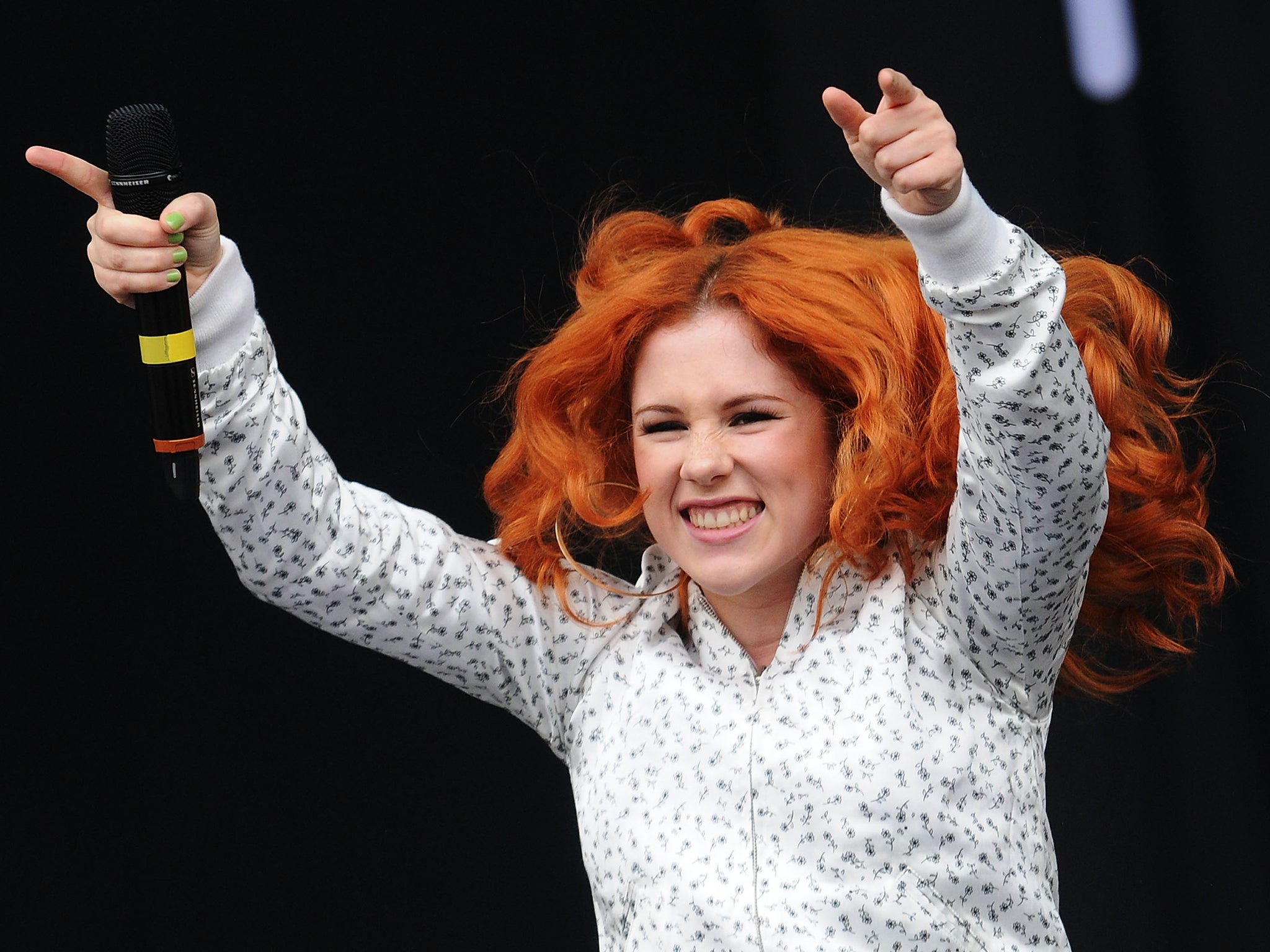An unabashed love letter to raving: How Katy B’s On a Mission bridged club culture and pop
Katy B’s 2011 debut was a paean to the dancefloor, where ravers were moving to the sounds of dubstep and UK funky. As the Peckham singer returns with new music, Aimee Cliff asks: would a crossover success like hers happen now?

Your support helps us to tell the story
From reproductive rights to climate change to Big Tech, The Independent is on the ground when the story is developing. Whether it's investigating the financials of Elon Musk's pro-Trump PAC or producing our latest documentary, 'The A Word', which shines a light on the American women fighting for reproductive rights, we know how important it is to parse out the facts from the messaging.
At such a critical moment in US history, we need reporters on the ground. Your donation allows us to keep sending journalists to speak to both sides of the story.
The Independent is trusted by Americans across the entire political spectrum. And unlike many other quality news outlets, we choose not to lock Americans out of our reporting and analysis with paywalls. We believe quality journalism should be available to everyone, paid for by those who can afford it.
Your support makes all the difference.The timing of the 10-year anniversary of Katy B’s debut album, the exhilarating On A Mission, on 1 April 2021, couldn’t help but feel extra poignant. Currently, the future of nightlife in the UK looks uncertain, with the Night Time Industries Association warning that unless the government steps in, “much of what defines a night out in the UK will be lost forever”. But On A Mission is a jolt back in time to a recent past when clubbing was everything, with a party on every night of the week, where anyone who mingled next to those speaker stacks could be a star. This was the 2000s pop album that united the charts with the cutting edge of club culture – like our generation’s answer to Club Classics Vol One by Soul II Soul.
After a year devoid of dancefloors, hearing the strobe-lit, bassy joy of On A Mission again is like a balm. Katy B’s debut is an essential pop album documenting the sweaty, messy highs of a night out at east London’s mid-2000s dubstep hub Plastic People. It’s a record that pulsates with the smoky memories of the bass-driven strains of electronic club music – dubstep, house and UK funky – that emanated from the dancefloor and then reverberated through the recording booth. On the indelible lead single, “Katy On a Mission”, Katy’s coy vocal mirrors the experience of stepping down Plastic People’s stairs towards its basement, which was famed for the intensity of its sound system and its near-darkness: “elevating higher as my body’s moving lower”.
As a teenager living in Peckham and studying at the BRIT School, Katy – real name Kathleen Anne Brien – got her start in the music business by sending a garage-inflected demo into then pirate radio station Rinse FM. She caught the attention of station boss Geeneus and, from there, hopped on heady, underground white labels in a genre known as UK funky – a genre that emerged in the mid-2000s and drew on house, garage and dembow rhythms – like DJ NG’s “Tell Me" and Geeneus’s “As I”, credited as “Baby Katy”.
On A Mission, when it was released by Rinse’s own label in 2011, was something totally fresh: a vocal pop record that had credible roots in London’s club and pirate radio culture, Geeneus and his Rinse FM DJ/producer cohorts Benga, Skream and Artwork. The album went to No 2 in the UK, thrusting an unabashed love letter to raving into the mainstream consciousness. Her crossover success was clear when Alex Turner of the indie rockers Arctic Monkeys crooned “When I walk into the roo-oo-oom”, the unshakeable “Katy On A Mission” hook, on BBC Radio 1’s Live Lounge. And when “Lights On”, her collaboration with Mercury Prize-winning MC Ms Dynamite, reached No 4 in the charts behind Matt Cardle, The Black-Eyed Peas, and Rihanna.
Though the press of the time clumsily labelled her the new “queen of dubstep”, that wasn’t a crown Katy B herself rushed to claim: she had flirted with that sound on her debut – a ribcage-rattling mutation of dub and 2-step with sparse syncopated beats– but also with house, drum’n’bass, jazz, and electro-pop. “I think anyone who has grown up in London will identify with my music,” she explained herself to MTV back in 2014. “It’s just a hybrid of everything I would listen to, from R&B, to hip-hop, to grime, to garage, to house, drum and bass and dubstep... I like to change it up quite a bit and I really enjoy that about what I do because I get to be a bit of a chameleon.”
While it was new territory for chart pop, On A Mission is also a rarity as a dance music album that foregrounds the vocalist rather than the producers. It was originally conceived as a compilation album to showcase Rinse producers, but the project changed to fit around Katy as her vocals– always breezy, yet emotionally rich – stole the show. This was an uncommon occurrence, with many female dance vocalists going uncredited. There were extra barriers facing Black women in the scene, who, unlike Katy, had to face the double oppression of sexism and racism when they struggled to get credit for their work. Singer Katie Pearl spoke frankly with Mixmag last year about the extra difficulties that Black women faced when it came to breaking through from the UK funky scene into the mainstream, from being labelled a “diva” or “unmarketable”, to having to fight for credit on their own songs.
In the current landscape, with streaming and social media necessitating the release of a constant flow of singles, it seems the deck is stacked even higher against dance music vocalists who want to break through. A study in 2019 found that of the 100 most popular songs in the UK in 2018, 91 men or all-male groups were credited, in comparison to just 30 women. Of the 100 songs, only 13 were credited to solo women (in 2008, this number was 35). The BBC suggested this change was due to the rise of a pop music culture in which women vocalists are most often the “featured” act on tracks produced by men.
If an artist like Katy B were to want to break into mainstream pop today, it’s easy to imagine she might do so as a featured artist on tracks by Disclosure, CamelPhat or another DJ superstar. (These tend to be, of course, overwhelmingly male, with the number of female producers in the pop charts consistently hovering at around 2 per cent.) Debut albums like On A Mission just don’t happen so readily any more. Instead, singers seem to spend years generating hype by dropping single after single with a rotating cast of collaborators. Take Becky Hill, the drum’n’bass-loving powerhouse pop singer who has released 10 UK Top 40 singles over her eight-year career, and is yet to release her debut solo album.
Or RAYE, who feels like a 2021 peer to Katy B: also a south Londoner, and also a BRIT School student, she’s a fearlessly talented songwriter who weaves R&B and dance subcultures into her pop hits. (Like Becky Hill, she’s had three Top 10 singles, before releasing a debut full-length.) But she feels that at times, she’s had to compromise her vision to break the pop glass ceiling and cater to white mainstream audiences. “You listen to the radio and if you’re making [R&B] music you get sectioned off into 1Xtra world," she told The Guardian in 2017. “You won’t get plays and the support you need from big radio and you get written off. Which is why I had to learn what compromise was at a really young age.”

Re-listening to On A Mission in 2021 brings with it a nostalgic ache, not just for the thrum of a packed dancefloor, but also for such a thrilling, out-of-the-blue pop vocal debut album. Together with Geeneus, Benga, Zinc, and Skream, Katy B was able to arrive fully formed, with a vision and an identity that felt new in the pop landscape. Just 10 years on, it seems in some ways even tougher for young stars to announce themselves in the same way, to the same level of success. New artists are up against factors like physical sales having a bigger impact on chart placement than streams, and a fast-moving, disposable pop culture that requires them to rack up a string of hits before they ever record an album.
Though Katy waded further into the pop world on her 2014 follow-up Little Red, on which she worked with Robbie Williams collaborator Guy Chambers and scored her first No 1, she always seemed like something of a reluctant pop star. Her 2016 record, Honey, was an underrated gem – perhaps because she seemed to approach it with the antithesis of an ego-centred popstar mindset. Every track was a collaboration, with all her collaborators given equal billing, and it was her first album not to feature her face on the cover. Weaving luxuriously from sunlit Kaytranada grooves to a Craig David duet via a Four Tet and Floating Points jam, it was the sound of a musician in her laid-back, experimental element.
Speaking to The FADER, Geeneus said that the way they assembled Honey was a direct reaction to the difficult process of making Little Red in a major pop context. “We’d worked with big pop producers, and she’d done a lot of sessions over that time where she wasn’t really connecting musically with people,” he explained. “We wanted to show that the underground stuff can stand up. Katy really does care about club music – she’s not one of these artists that jump on a club song to get a bit of attention as a feature, then jump off and go and do something else.”

For a while, it felt as though Katy might have chosen to totally retreat after the release of Honey. But five years on, she’s finally returned with a vocal remix of “2 Far Gone” by jazz drummer, producer and composer Moses Boyd. It’s a transcendent, intricate tune, and Katy plays beautifully against the tension of the track’s bass wobbles, singing of a relationship in dire straits: “It’s holding me, something like the coldest breeze.” The current underground jazz scene is the most fertile and exciting musical space in the UK right now, and hearing Katy collaborate with Boyd is reminiscent of her own On A Mission track “Hard To Get”, where her gentle melisma weaves in and out of a trumpet-infused acid jazz instrumental.
After a long absence, hearing Katy B’s voice again is a bracing reminder of a classic pop album that briefly built a bridge straight from the underground to the mainstream. In our current, club-free existence, it’s also a reason to feel hopeful: fusing UK pop’s past with a freewheeling and innovative nightlife future, and making us long for the moment those nightclub doors open again. Here’s hoping for some more new Katy B music on the horizon to soundtrack it all, too...

Join our commenting forum
Join thought-provoking conversations, follow other Independent readers and see their replies
Comments